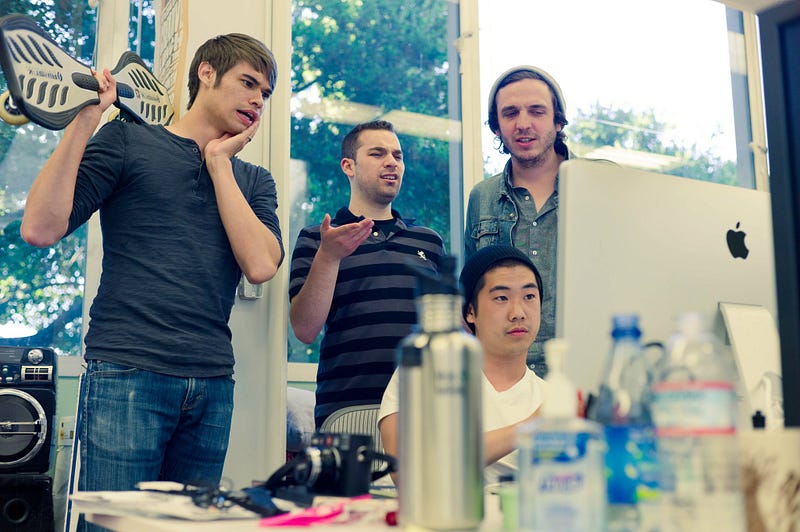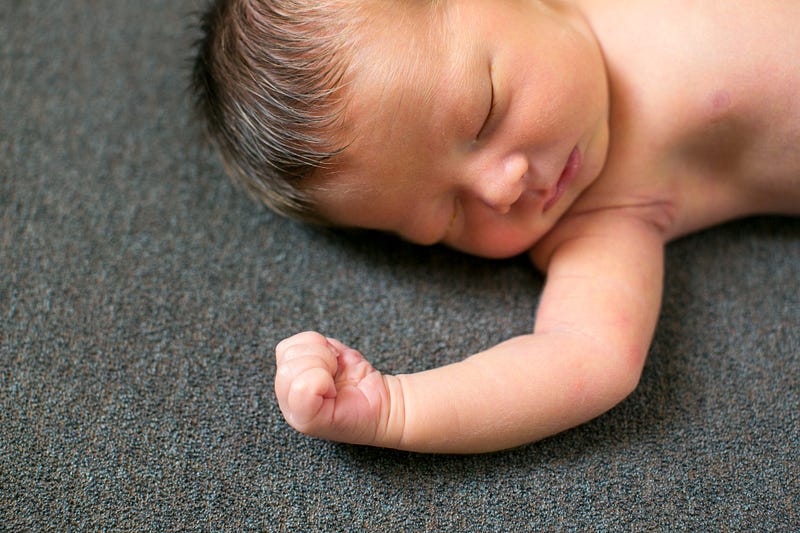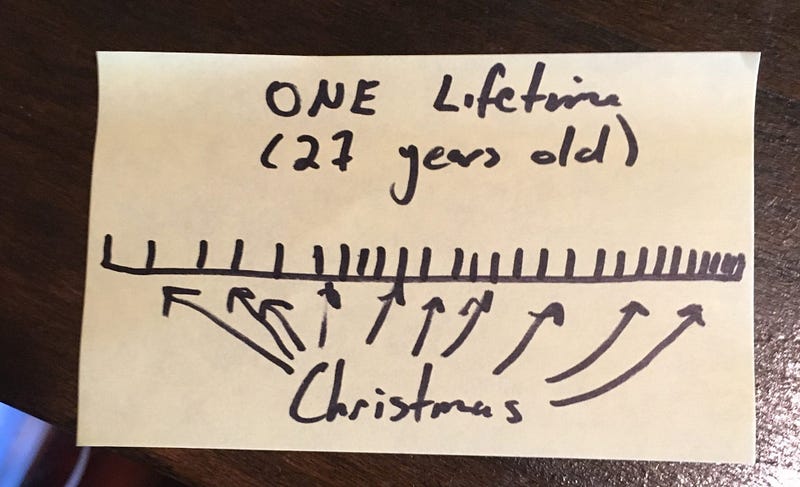You are two
weeks old, so there are only a few things we know about you. Your hair
would make a pop star jealous, all slicked down dark brown with frosted
blonde tips. Your “poo face,” with your mouth drawn in an off-center O,
could be a meme. You smell like cream and mint, and I’m sad I can’t
bottle that scent and revisit it for years to come. And if sleeping were
a competitive sport, you stand a good chance of bringing home some
medals to adorn your nursery.
When
we heard that you were going to be a boy, I confess that I was nervous.
I know what it is to be a girl and a woman growing up in this country.
My female friends and I have swapped countless stories about life with
these X chromosomes. When your older sister was born, as unprepared as I
was for stepping into this new role of mother, as different as her
upbringing and cultural identity would be from mine, I felt at least
that I would understand her. Because I’ve been there.
You
on the other hand… well, I have pretty much zero experience with little
boys. I have no siblings, and none of my friends growing up were boys
or had brothers. What is it like to grow up a boy? I know this only from
a distance, from children’s books and boy band ballads and the
reminiscences of grown men.
What will your life be like?
Every
day, like a book, I try and read another page of you so I can witness
your plot unfolding. But right now, your story still largely exists in
my imagination. You are a swaddled little bundle of potential, and the
triumphs and trials of your future loom yet unknown. And yet, while your
father and I don’t know whether you’ll prefer trains or banjos or
playgrounds, while we don’t know what passions you’ll pursue, or whom
you’ll love, we talk about the values we hope you will live. Because
they are on us to demonstrate. Because it is our responsibility to help
you shape them.
I
hope, first and foremost, that you will understand where you came from.
There is a myth in our culture that we like to tell: that we, as
self-reliant individuals, make our lot in life based on our talents. It
is a lovely myth because the message is meant to empower: no matter who
you are or what your origins, you can create for yourself the life that
you want.
This
isn’t entirely wrong — certainly I will never tell you that any dream
is out of your reach — but the idea that any of us is completely
self-reliant, or that our society is a true meritocracy, is misguided.
We humans are social creatures, and the histories, traditions and
beliefs we hold — however right or wrong — are as much a part of our
identity as the cells within our body. The context under which we live
matters, and you should understand that context to understand yourself
and the broader world.
This
is your context: you have won the world’s birth lottery. You are a
citizen of the United States, the most democratic and powerful nation in
the world. You were borne into a family that loved you from the moment
we were aware of you, and that has the resources to take care of your
every need and want. You are born a boy, and your skin is light.
These
things do not guarantee you a smooth future, nor will they shield you
from your own personal hardships ahead. And yet, these simple facts of
your birth will make many situations easier for you, not because of
anything you have done, but simply because that is how the world is
wired to work. You will find that people are more likely to listen to
you, agree with you, show you kindness, and give you second chances
while someone else equally deserving would not get the same treatment.
When you find yourself in a position where you can use your privilege to
bring about greater equality, I hope you seize it.
The
second thing I wish for you is that you surround yourself with people
who enrich your life and make you better. We are the average of those we
spend our time with. Don’t waste your energy on the trolls and takers
who feel big only when others feel small, or the narcissists who think
life is about keeping score with money or right swipes or membership
into exclusive clubs. Ignore the ignorance of those who tell you to be
cool and adhere to a tobacco billboard’s version of a man. Instead, find
people whose energy lifts you up and who share their passions
generously. With your true friends, you don’t need to pretend to be
someone else to impress them; you don’t need to play games or conform to
arbitrary rules. They will teach you new perspectives and inspire you
to love the things that they love. And you, in turn, will inspire them.
Out
of those friends, I hope the dearest and best one— that person you
think to call when anything good or bad happens, whose conversations
with you melt the hours away, whose presence in your life brings on a
parade of happy days — is the one you build your family with. There is much in life you can’t control, but with whom you spend your time is up to you. Choose wisely.
Third,
I hope that you will always harbor a deep curiosity for the world. I
don’t doubt that you will learn much in the span of your years, but the
universe is vast compared to the tiny speck that is human knowledge. It
may be tempting at a certain point to pronounce yourself “made” — an
expert, a fully realized individual — but I hope your ego never prevents
you from undertaking the hard, tangled and often unglamorous task of
gleaning for truth. Take time to behold the wonder of the universe; be
humbled by all the ways you are still a beginner.
I
hope you will be wrong many, many times, because you tried. I hope you
can admit your failures and apologize to others when you are at fault,
so that past mistakes hold no power over you. I hope you revel in the
journey and not just the results, because it is in that path of growth
and mastery that one’s story is made.
And
finally, I hope that no matter what, you can hold these two truths in
your heart at once: that the world is beautiful beyond imagination, and
that it is woefully short of perfect. No matter how good or bad things
are, it can be better, and it can be worse. How you feel and what you
make of it will be a matter of perspective, and the greatest battles you
fight will take place inside your head. The art of living well, then,
lies in the balance of these two truths. May you find joy in the simple,
everyday moments: the gentle undulation of your baby’s breath, the
laughter over a dinner table, the sweet taste of summer fruit. May you
hold fast to hope and optimism, even when other people disappoint you
and break your heart, as surely they will. But may you also recognize
that at every moment, there is suffering that can be reduced, injustice
that should be questioned, and a better future that you can run towards.
As
you lay sleeping next to me, your little fist barely bigger than my
thumb, I am grateful that you are here, and I am overjoyed to be your
mother. Sleep well, my little one. I can’t wait to get to know you
tomorrow, and in all our tomorrows to come.




























